For at least the last 30 years, the majority of fly rod manufacturers have moved in the same general direction. Fly rods have grown stiffer and faster, which means they require more force to bend and they’re harder to cast. At the same time, the consensus among America’s top anglers seems clear. Today’s rods are not as much fun to fish.
While rod builders have occasionally veered from the ‘fast action’ path — softer fiberglass rods, for example, have made a comeback in certain circles — much of the fly fishing industry invariably returns to the same design parameters and the same ‘faster is better’ marketing slogans. Which is why the vast majority of high-end graphite fly rods are stiffer now than they used to be, and why so many fly fishers have never had the opportunity to cast moderate or slow action graphite rods.
If there’s an upside to this endless array of too-stiff fly rods, it’s that there’s plenty of space for rod designers willing to think outside the box. Enter Dan and Doug Daufel, twin brothers who are building what are arguably the finest graphite fly rods ever created.
I reached out to Dan and Doug, who own Montana Brothers Rodworks, and asked if they would be willing to answer a few questions for Hatch Magazine.
Here, lightly edited for clarity, is our conversation.
Where did the two of you grow up?
We grew up in Dayton, Ohio. It is an unlikely location for two young fly fishers. As youngsters we fished for anything that would bite: sunfish, bass, carp, even chubs. As teenagers, we spent many of our summers fishing the limestone and freestone streams of Pennsylvania.
How did you both end up working at Blue Ribbon Flies in West Yellowstone, Montana?
We were very lucky. We mentioned to Barry and Cathy Beck that we wanted to go out West for our summer break from college. They suggested we send our resumes to some fly shops in the Yellowstone area. Blue Ribbon was interested in hiring us. They had a place for us to stay, which sealed the deal. Working for Craig & Jackie Mathews, and John Juracek, was probably the best job we will ever have. We really learned a lot from them and the staff while we worked there. Many of the close friendships we have today are the result of our employment at Blue Ribbon. It changed our lives.
Who were the biggest influences on your fishing, and your casting?
We have been fortunate to have some very gracious teachers, mentors, and fishing friends. We are products of those relationships. We could go on and on, but we’ll try to narrow it down. Early on, Barry and Cathy Beck had a great influence on us. We loved listening to Barry tell us stories about fishing the Letort with Vince Marinaro. We really idolized them. Another strong influence was the late Jake Jaeger who we met at a fly fishing club in Dayton, the Miami Valley Fly Fishers. Jake loved to fish, and we think if he had to crawl to the river, he would. We mentioned earlier that working at Blue Ribbon (Craig & Jackie Mathews and crew) had a profound impact on us, but John Juracek, in particular, has probably been our greatest single influence. We have learned so much from him about casting, rod design, fly tying, and fishing. He is such a great teacher.
And then there’s the infamous Dave Shultz and the Island Park boys — Steve Mate, Bob Brooks, Tom Warren, the late Paul Brown, Dan Picaro, and Dom Traverso — all of whom we’ve been lucky to call friends.
Rod building and design-wise, it would be the late Jim Green and Paul Brown, Mike McFarland, Bob Giannoni, Dave Shultz, Tim Anderson, and Jim Corbin from Ohio.
We should also mention fishing friends like Dale Spartas, Ken Takata, Yuki Bando, the late Donnie Bastian, and Fran Gough. And lastly, we should credit our mother, who took us fishing when we were children, and our wives (and fishing partners) Annabel and Brandy, who have greatly encouraged our efforts. See, we told you this could be long! Again, we have been very lucky to have these friendships and we wouldn’t be here today without them.
What made you decide to build fly rods?
We already have full-time jobs, so it’s really a labor of love for us. Our rods are influenced by Paul Brown’s original designs. Paul's rods had such a profound impact on us, and added so much enjoyment to our fishing, that we wanted to share his legacy with other anglers. That’s why we do it. We have no interest in building other types of rods.
Why did you set up shop in Bozeman?
It’s one of the closer towns to the Yellowstone area, and we absolutely fell in love with the area and the fishing. Being from Ohio, we could hardly believe the mountains were real when we first saw them. We always wanted to live in a place where we could fish for trout after work and on the weekends.
You’re both serious fly tyers. What percentage of your flies do you tie yourselves, and what percentage do you purchase?
Yep, we were commercial fly tyers for 13 years. In the past, we would rarely buy flies. We both remember Craig Mathews giving us a hard time for tying flies while we were on a fishing trip because it cut into our fishing time. Buying flies was so foreign to us. Tying was just part of our day after we finished fishing. But that also meant a lot of late nights. Nowadays, with our time more limited, we occasionally buy flies. We’ve also become very good at recycling used flies.
What are you favorite fly patterns?
We would say that we are not fans of particular patterns, but fans of certain types of materials — those that introduce life into the imitation, are durable, fish well, and, in the case of dry flies, makes the fly easier to see. For example, we prefer dubbing to the sterility of a quill body. We like a variety of hairs like deer, elk, and caribou hair, as they float and fish well and can, in some cases, make the fly easier to see. We also like certain synthetics like Antron, Zelon, Beck’s Poly Fluff, and EP fibers for winging materials and shucks. Foam can also be a great addition to emergers and floating nymphs.
What’s the difference between a mediocre fly rod and a great fly rod?
Boy, we could spend a lot of time here, but in short, it would be a conformance to the design parameters. But one quality we do look for in every rod is smoothness. If there are sections of the rod that are softer or stiffer than the section preceding or after it, it can make the bend feel disjointed.
Can you explain “conformance to the design parameters?”
Sure. It simply means that we have to consider what the rod designer had in mind for the rod and whether or not those objectives were achieved.
On your website, you describe your rods as either “slow action” or “medium action.” Why, when so many manufacturers are focused on marketing fast or very fast action rods, have you concentrated on the other end of the spectrum?
Well, these are actions we prefer to fish for the majority of fishing situations we encounter. Stiffness has been marketed as a desirable quality for fly rods. It’s a shame. Paul Brown used to say it’s the rod’s ability to bend that gives it its power. And there is a real beauty to feeling the rod bend.
Your rods are incredible casting tools. What are the three most important things you look at when you’re trying to create a blank?
It would be the amount of bend (or static deflection) under a load, the way the rod bends or accepts the load, and the smoothness of the rod. All of these factors will affect how the rod feels. It is interesting that you can take two rods with a similar static deflection, but they can feel totally different as they are bending in different areas. Another important quality we consider is the way the rod feels in the hand.
Given that anglers break rods — and sometimes lots of rods — what are your thoughts on rod warranties?
We hate them. In some respects, it encourages anglers not to take care of their tackle. When we first started fishing, you took great care of your tackle as that was all you had. If you broke your rod, you were out of luck. The thought of someone driving down the road with one of our rods strapped to the hood of their car makes our blood pressure rise. Besides we wanted to make rods, not be in the repair business.
When are your heavier rods (5 weights and 8 weights) going to be available?
The rod’s action is our primary concern, and it has to be just right. We have been pretty picky about the actions. Best case would likely be early fall of 2023 for the 5 weights. We started with the 4 weights as it is the rod weight we fish the most, and we thought it would be easier to transition to the 3 weights and the 5 weights from what we learned from the 4 weights. For the 8 weights, probably years away. We spent 10 years on the 4 weights, we hope it does not take that long.
You have a months-long wait time for your Montana Brothers rods, which means that I can’t just walk into a store and buy one of your rods. If I needed a new trout rod today, what would you recommend?
Off the shelf from the local shop, we would suggest the budget-friendly Redington Classic Trout. We actually prefer them over many of our old treasured Winstons and Orvis Superfines. They are nice rods.
What are your favorite classic reels and your favorite modern reels?
We are big fans of old Hardy reels. In addition, their current lineup of traditional reels are very, very nice. For large arbor, our favorite reels are from Lamson and Sage. You might argue that you don’t need a disc drag for trout fishing, but the sealed disc drags are certainly easier to maintain. We used to spend a morning or two each year cleaning and greasing our reels, but we just don’t have that kind of time anymore. The offerings from Sage and Lamson are also some of the lightest large arbor reels on the market. For a long time we avoided large arbor reels as many were too heavy. Many graphite rods will feel better in hand with a lighter reel. In some cases, the rod can also feel a little tippier than it actually is with a heavier reel. We also like the numbering system on the drag knob with some of the Sage reels. It makes it very easy to tell where the drag is set.
When it comes to trout, do you prefer WF or DT fly lines?
Our favorite trout lines are the Rio Technical Trout and the Rio LightLine in double taper. Both are true to weight. We prefer double tapers for trout fishing for a variety of reasons. John Juracek wrote a great article about double taper lines, Whither the Double Taper?. It’s worth reading.
If you could only fish three different rivers in 2023, which ones would you pick?
Well, we could probably spend every day fishing the Ranch section of the Henry’s Fork. But given that there are three choices, it would be the Firehole, the Madison, and the Henry’s Fork. We would be perfectly happy just fishing those three rivers for the rest of our lives.
In many ways, the Montana Brothers Rodworks story is a classic American tale. Two exceptional anglers decided that the industry wasn’t meeting their needs, so they spent a decade perfecting their own rod designs. To the best of my knowledge, their 904 and 904L rods are unique. They don’t cast, or fish, like any other rods I’ve ever used. And while rod action and rod design are inherently subjective — we all view our fly rods through our own unique lens — it’s hard to argue with the Montana Brothers Rodworks results. The Daufel brothers have created the finest fly rods I’ve ever fished, and it will be fascinating to find out if their future models continue that trend.





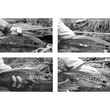





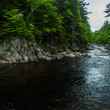
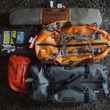



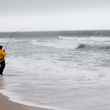




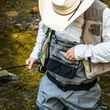
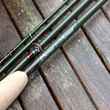



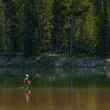
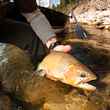

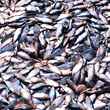

Comments
GREGG MESSEL replied on Permalink
I MET THE BROTHERS WHEN THEY STARTED THIER JOURNEY AND THE OPPORTUNITY TO CAST MANY OF THE PROTOITYPES. I LOVED THE FEEL OF THEM AND THEY CAST SIMILARLY TO MY RODON BORON FLY RODS OF THE 1980’S
I HAVE THEM ON MY WISH LIST
Glenn Dotter replied on Permalink
Good read and I wish these guys success. They are correct that slow and medium action flyrods are more fun. I had a bamboo rod put in my hands when I was 7. That was 63 years ago. Then I was given a fibreglss rod at around 14. Both were a joy to cast. I rebult that bamboo rod a couple years ago in memory of my dad. It was built for him around the late 30's or early 40's. I have built several IM6 graphite rods and I wouldnt trade them for any $900+ fast acton rods. Ive seen too many of them break 6" from the tip.
I realise you guys are really cutom building your rods to order, so I understand your price tag. Unfortunately that takes this 70 year old flyfisher out of the mix with alot of others. Still I wish you well.
Pages